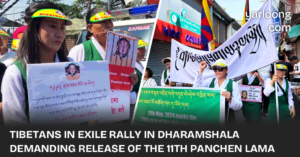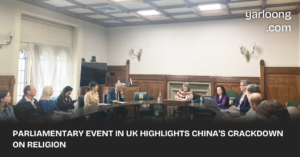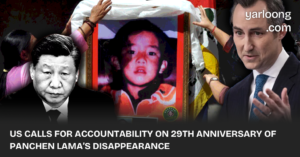
In a recent opinion piece by Claude Arpi for First Post, a significant geopolitical move by China has come to light, involving the renaming of Tibet as ‘Xizang’. This strategy is seen as Beijing’s attempt to erase Tibet‘s historical footprint and push its narrative across South Asia.
During the recent Asia-Pacific Economic Cooperation (APEC) summit, the conversation between US President Joe Biden and Chinese President Xi Jinping brought attention to China‘s human rights abuses in regions like Xinjiang, Tibet, and Hong Kong. President Xi‘s response, emphasizing China’s non-aggressive history, conveniently overlooks the annexation of territories such as Eastern Turkestan (now Xinjiang), Tibet in the early 1950s, and the Aksai Chin of Ladakh. China‘s stance is that these territories have always been part of the Middle Kingdom, hence not an occupation.
The issue extends beyond territorial claims. China‘s recent efforts to rename Tibet as ‘Xizang’ mark a deeper cultural and political assertion. On November 10, a white paper was released by the State Council Information Office of China on the governance of the ‘Xizang Autonomous Region’, as reported by Xinhua. This document, titled “CPC Policies on the Governance of Xizang in the New Era: Approach and Achievements,” aims to make ‘Xizang’ the official name for Tibet. It outlines the Chinese Communist Party’s policies in the region, asserting significant progress and success under Xi Jinping‘s leadership.
The Central Tibetan Administration (CTA), Tibet‘s government-in-exile, has strongly rejected this white paper, labeling it as filled with ‘misinterpretation, misconceptions, and lies.’ The CTA points out that the document consistently downplays Tibet’s distinct political identity by using the term ‘Xizang’.
ALSO READ: China’s Campaign to Reshape Tibetan Identity Through Boarding Schools in Tibet
Furthering this narrative, China has sent officials like Wang Junzheng, the Tibetan (now Xizang) Autonomous Region’s party secretary, on diplomatic visits to countries like Nepal, Sri Lanka, and Singapore. These visits are seen as attempts to gain acceptance for the term ‘Xizang’ in place of Tibet. Wang’s discussions with leaders of these countries involved talks of cooperation and development under the Belt and Road Initiative, further embedding the term ‘Xizang’ in international dialogues.
This renaming strategy is not just a semantic change but a significant step in China’s long-term plan to assimilate Tibet into its national identity, erasing its historical and cultural independence. By changing the name, Beijing aims to rewrite history and diminish the existence of an independent Tibet, which has implications for international agreements and historical records, including those concerning India’s northeastern boundaries.
The implications of these moves are far-reaching, affecting not only the geopolitical landscape but also the cultural and historical recognition of Tibet. Arpi’s analysis underscores the necessity for the international community to recognize and respond to these subtle yet powerful changes in China‘s policy towards Tibet.






